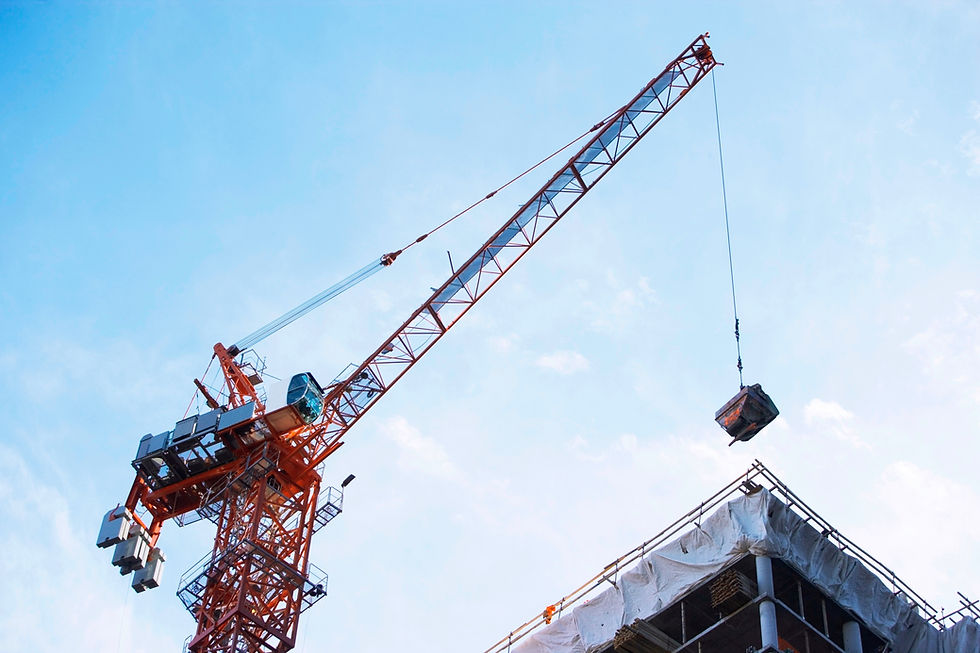Securing Success: A Guide to Rigging and Material Handling Safety in Construction
- Elie Nassif
- Sep 25, 2023
- 2 min read

Construction sites are dynamic environments where heavy loads, equipment, and materials are moved regularly. Rigging and material handling are essential aspects of the construction process, but they can also be hazardous if not executed with precision and safety in mind. In this blog post, we will explore the critical aspects of rigging and material handling safety in construction.
1. Proper Training and Certification
Before anyone operates rigging equipment or participates in material handling tasks, they should receive adequate training and certification. Training programs should cover topics such as load calculations, equipment operation, and safety protocols. Certified riggers and operators are more likely to understand the potential risks and the correct procedures to mitigate them.
2. Inspect Rigging Equipment
Regular inspection of rigging equipment is crucial to ensure its safety and functionality. Damaged or worn-out equipment should be immediately replaced. This includes checking hooks, slings, cables, and other rigging hardware. Additionally, all equipment must be load-rated and appropriately labeled.
3. Plan Lifts and Loads
Every material handling operation should start with a well-thought-out plan. This plan should include load weights, center of gravity calculations, and the selection of the right rigging equipment. Proper planning reduces the risk of overloading and shifting loads, which can lead to accidents.
4. Maintain Clear Communication
Effective communication is vital during rigging and material handling tasks. Team members should use hand signals, radios, or other designated communication methods to coordinate movements and ensure everyone is on the same page. Clear communication helps prevent accidents caused by misunderstandings or misinterpretations.
5. Safe Lifting Techniques
Proper lifting techniques are essential for preventing strains and injuries. Workers should use their legs, not their backs, to lift heavy objects and keep the load close to their bodies. Using mechanical lifting aids, such as cranes or forklifts, when possible, can further reduce the risk of injuries.
6. Adequate PPE
Personal protective equipment (PPE) plays a significant role in rigging and material handling safety. Workers should wear appropriate gear, including hard hats, gloves, steel-toed boots, and high-visibility vests. Depending on the task, additional PPE like eye protection or hearing protection may be necessary.
7. Monitor Weather Conditions
Weather conditions can significantly impact rigging and material handling safety. Wind, rain, or extreme temperatures can make operations riskier. It's crucial to monitor weather forecasts and adjust work schedules or safety precautions accordingly to prevent accidents related to adverse weather conditions.
8. Regular Safety Meetings and Reviews
Continuous improvement is key to safety in construction. Regular safety meetings and reviews provide an opportunity for workers to share experiences, discuss safety concerns, and learn from past incidents. This collaborative approach fosters a safety-conscious culture on the construction site.
In conclusion, rigging and material handling safety are paramount in the construction industry. By emphasizing training, inspection, communication, and proper planning, construction professionals can create a safer work environment and reduce the risk of accidents. Prioritizing safety not only protects workers but also contributes to the overall success of construction projects.
If you found this blog post on rigging & material handling safety informative, check out our YouTube video for an in-depth visual exploration of the same topic. Watch it here! https://www.youtube.com/watch?v=CmDfW5Qsy5A























Comments